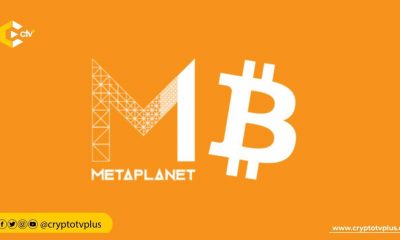News
New Analysis Questions Hal Finney as Satoshi

Jameson Lopp, a notable investigator, gathered various pieces of evidence, including archived emails from 2010 and data from a 10-mile race in California in 2009, which he believes point to the true identity of Satoshi Nakamoto.
According to recently discovered evidence, the early Bitcoin pioneer, Hal Finney, participated in a 10-mile race at the same time that Satoshi Nakamoto was sending emails and making Bitcoin transactions.
For many years, people widely speculated that Hal Finney, a computer scientist who died in 2014, was the creator of Bitcoin. He was an early adopter of Bitcoin, downloaded and ran the software, and was the first recipient of Bitcoin, lending weight to this theory. However, Finney denied being Satoshi until his death. Jameson Lopp, a cypherpunk and co-founder of Casa, challenged the long-standing theory that Hal Finney was Satoshi Nakamoto. In a recent blog post, Lopp presented new evidence that casts doubt on this theory.
Lopp’s primary piece of evidence is based on a 10-mile race that took place in Santa Barbara, California on April 18, 2009.
According to the data from the race, Hal Finney participated in the Santa Barbara Running Company’s Chardonnay 10 Miler & 5K, which started at 8 a.m. Pacific time and took 78 minutes to finish.
Although the race took place on the same day as emails sent from Satoshi’s address, it also coincides with timestamped emails sent between Satoshi and Mike Hearn, an early Bitcoin developer.
Jameson noted that on the same day, early Bitcoin developer Mike Hearn was emailing Satoshi. He pointed to archived emails released by Hearn in the past as evidence of this.
“What can we determine from all of this? Satoshi sent the email to Mike at 9:16 AM Pacific time – 2 minutes before Hal crossed the finish line.”
“For the hour and 18 minutes that Hal was running, we can be quite sure that he was not interacting with a computer,” Lopp added.
Lopp cited on-chain data as further support for his argument.
According to the emails between Hearn and Satoshi, Satoshi sent Hearn 32.5 BTC.
He also pointed to a transaction that occurred on block 11,408, which was mined at 8:55 a.m. California time, 55 minutes into the race.
Lopp argued that the 6:16 p.m. email from Satoshi, in which Satoshi confirmed two transactions, occurred while Finney was still running the race.
Separate analysis has shown that Satoshi was actively working on code and posting on different forums during a time when Finney’s Amyotrophic Lateral Sclerosis had already affected his ability to use a keyboard.
Lopp referenced a post by Fran Finney, Hal Finney’s wife, from August 2010. She stated that they attended the Singularity Summit in San Francisco on August 14-15 and that Hal Finney’s ALS had made it difficult for him to type at his previous speed of 120 words per minute.
According to Lopp, during the same time that Hal Finney was having difficulty using a keyboard, Satoshi made four code check-ins and wrote 17 posts on various forums between August 14-15, 2010.
Additionally, Lopp pointed out that there were notable differences between Hal Finney’s Reusable Proofs of Work code and the original Bitcoin client code.
Lopp did acknowledge that there are possible objections to his evidence.
Mike Hearn published the emails in 2017, several years after the events in question, and at a time when some members of the Bitcoin community had already lost trust in him.
One possibility is that Hal Finney may have planned the emails and transactions ahead of time, or that there may have been more than one person behind the Satoshi Nakamoto pseudonym.
However, Lopp argues that there is evidence that one person developed the original Bitcoin codebase:
“In all my time researching Satoshi, I’ve yet to come across any evidence suggesting it was a group. If it was a group, then they all operated on the same sleep schedule, consistent across code commits, emails, and forum posts.”
Hal Finney passed away from ALS-related complications in August 2014.
Read also: Report: Q3 blockchain gaming Unique Active Wallet surpasses Q2

























1 Comment